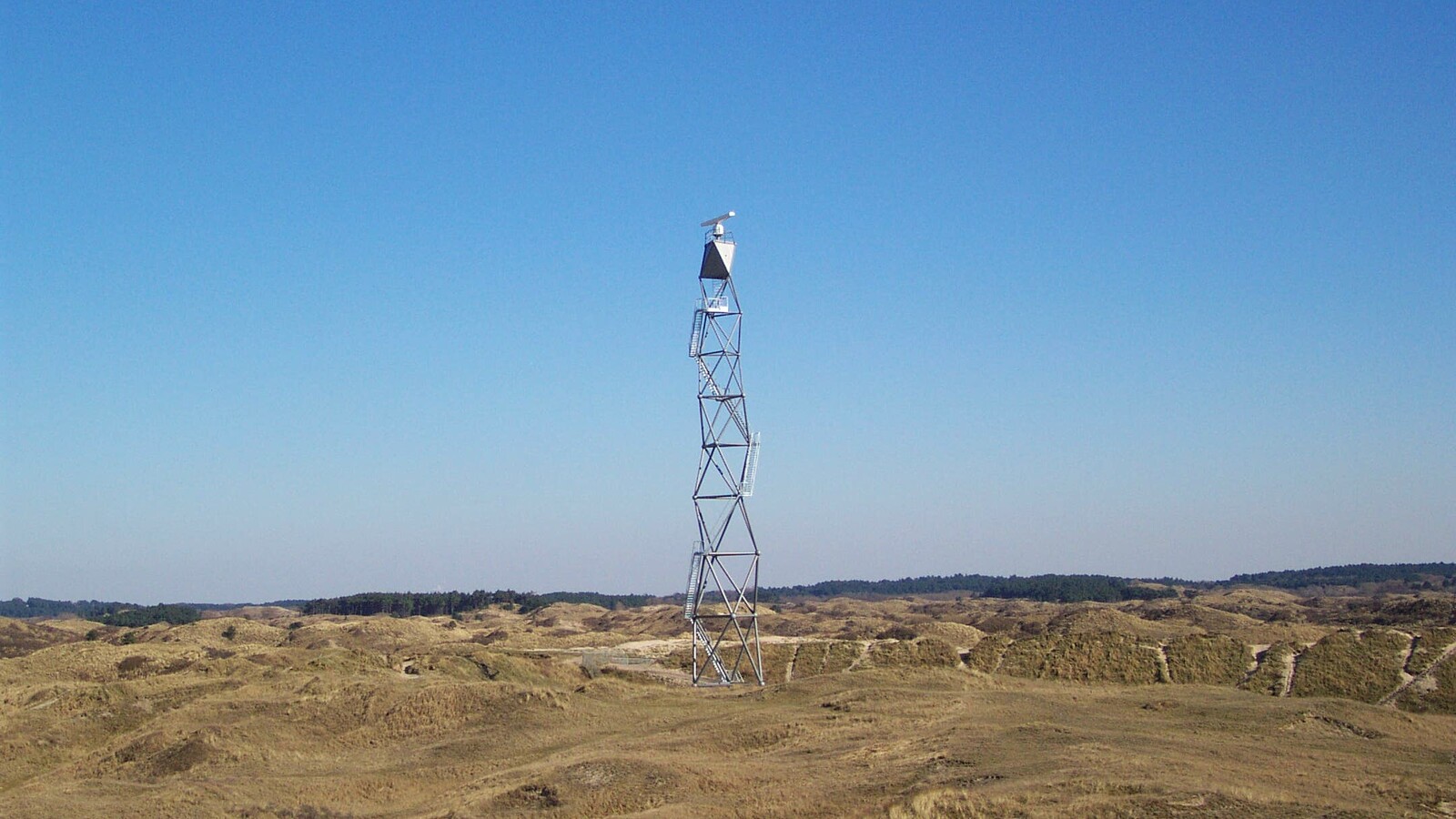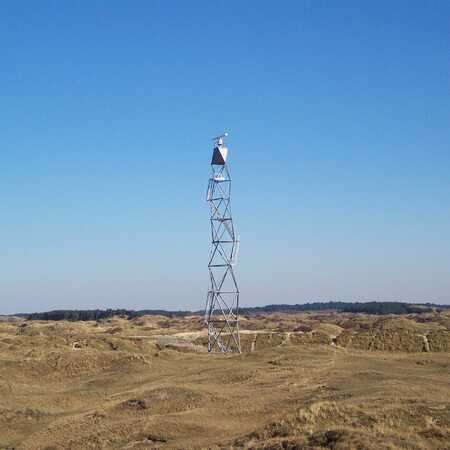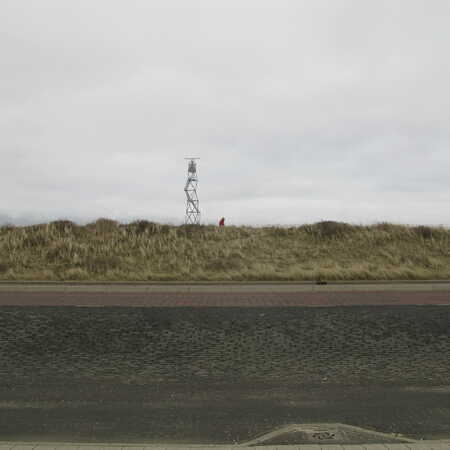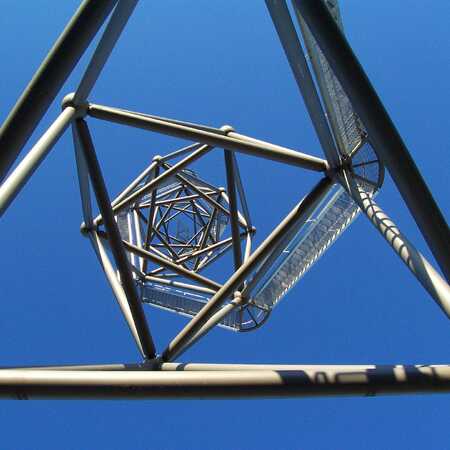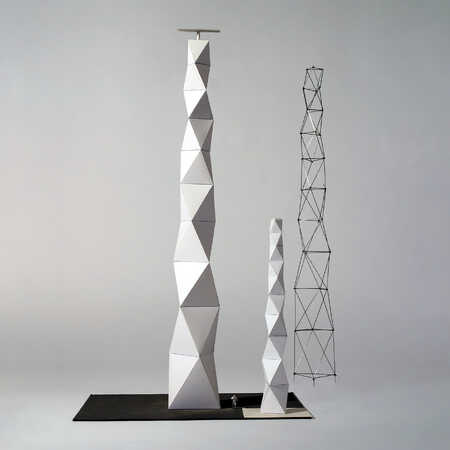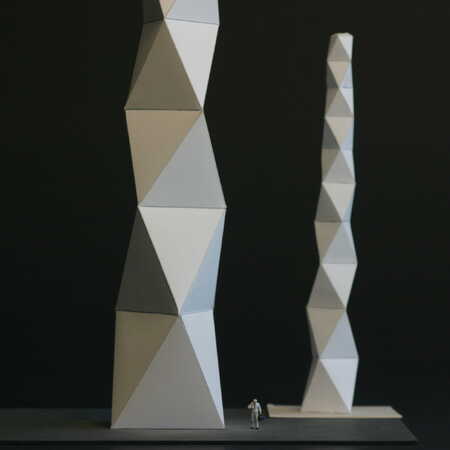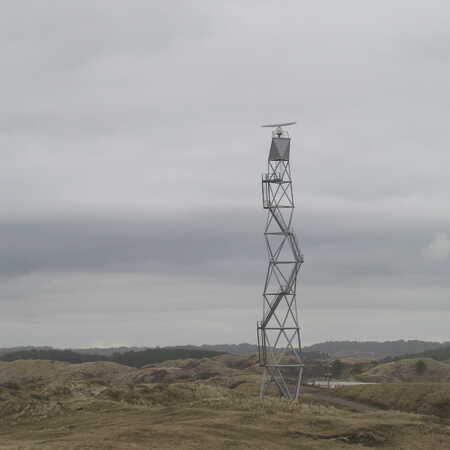0236
Coastal shipping traffic made it necessary to construct an extra radar mast on the North Sea coast at Zandvoort. Rijkswaterstaat (Directorate-General of Public Works and Water Management) issued the commission for the design of a new radar mast that would take due account of this special location within a nature area. The plans for the 50-metre-high mast place it in the middle of the dunes, right next to Zandvoort’s racing circuit at the infamous ‘Tarzan Bend’.
The mast’s rotary stability is crucial for the radar installation’s accuracy. A small deviation in the position of the mast results in considerable distortion in the readings. The location also demands that the mast is as unnoticeable as possible against the horizon when looking from the nature area.
A skeleton structure was proposed in order to make the mast as light as possible with the greatest possible rotary rigidity. This structure gives the tower the largest possible diameter for the requisite stability coupled with the great possible transparency.
The tower is constructed with a stack of octahedrons, with sides composed of scalene triangles. Making one leg of the upright triangle in the octahedron longer causes a twist in the tower. The stairs that spiral upwards around the tower follow the longest edge of the triangle, the element with the flattest incline.
Because the bases of the successive octahedrons decrease in size, the tower tapers towards the top. The tower’s topmost octahedron, just beneath the radar antenna, has enclosed sides and provides the housing for the radar equipment.
The platform in the top of the mast will also serve as a camera position offering a view of the entire circuit for events at Zandvoort’s racetrack.
The tower is assembled on site. All the joints are welded. This is not just for aesthetic reasons but also because this jointing method is advantageous for the rigidity of the mast. The smooth finish of the welded joints also reduces maintenance of the mast exposed to the tough coastal climate. All the joints are uniform, because the proportions of the octahedrons’ component triangles are the same and the tower’s upward taper is regular. Just one single detail suffices for the composition of the whole tower.
Project: #236
Related
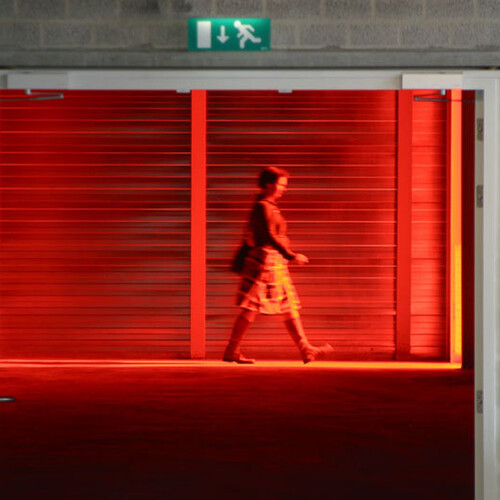
Stedelijk Museum CS
Temporary location of Stedelijk Museum Amsterdam in the former TPG building on Oosterdokseiland
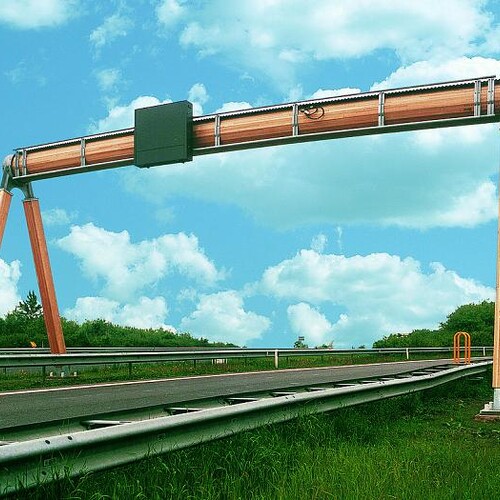
Wooden gantries, Den Bosch, Alkmaar
Overhead gantry signs made out of wood
An experiment with sustainable, wooden traffic gantries

Wintrack pylons
Technology in slim silhouette
They are all over the world, those steel giants, made up of triangles, their two pairs of outstretched arms hovering over the landscape
